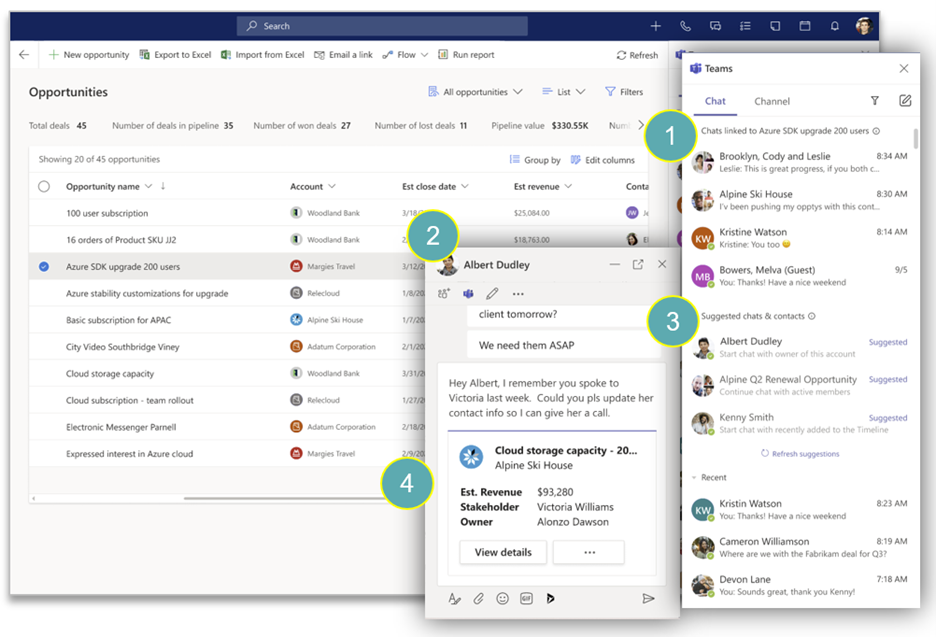Workload analysis involves systematically evaluating tasks assigned to team members, focusing on work volume and completion time to enhance productivity. Key steps include identifying tasks, measuring time requirements with tracking tools, evaluating capacity against actual workload, and implementing changes for balanced distribution. This process can lead to 20-30% productivity gains, reduced burnout, and improved resource allocation. Best practices involve using project management software, conducting regular reviews, and engaging employees in the assessment. For businesses, this ensures optimal resource utilization and prevents over-staffing, directly impacting profitability.
Definition and importance of workload analysis
Workload analysis is a critical component of project and resource management, involving a detailed evaluation of tasks assigned to each team member. This ensures fair workload distribution, directly impacting productivity by identifying overloads or underused capacities. It’s essential for effective resource allocation and maintaining workload balance, thus enhancing overall performance.
Role of workload analysis in enhancing productivity
The role of workload analysis in boosting productivity cannot be overstated. It aids in efficient workload planning and distribution, preventing staff overburdening and promoting better resource allocation. Consistent workload tracking provides insights for resource management and capacity planning, leading to improved project outcomes.
Steps involved in conducting a workload analysis

In our in-depth analysis of workload, it is paramount that we discuss the different strategies used to handle it. One such strategy is detailed extensively in our article on workload management. This will provide further clarification on how best to optimize work processes in diverse environments.
Conducting a workload analysis begins with a detailed assessment, identifying and quantifying tasks using data from job descriptions, time logs, and project management tools. Capacity planning follows, determining resource capacity and optimal allocation. Regular workload tracking ensures balanced distribution and identifies areas needing adjustment.
1. Identifying the workload
Identifying the workload is a key aspect of project management, involving task assessment and distribution to optimize productivity. It includes considering workload capacity and balance, resource allocation, and capacity planning. Workload tracking maintains project schedules and identifies issues, providing insights for future planning.
2. Measuring the workload
Measuring workload is essential for project management and team productivity. It encompasses workload planning, resource allocation, and ensuring task balance and distribution. Accurate workload tracking measures resource management efficiency, significantly improving capacity planning and project success.
3. Evaluating the workload
Evaluating workload involves a comprehensive workflow assessment for efficient resource allocation and capacity planning. It’s crucial for effective project management and enhancing team productivity. Ensuring balanced workload distribution prevents overload and promotes a harmonious work environment.
4. Implementing changes based on analysis
Implementing changes based on workload analysis is vital for optimal workload distribution and balance within the team. Efficient resource allocation and project management allow for adjustments in capacity planning to meet company goals. Workload tracking monitors and modifies workload capacity, ensuring smooth operations and effective resource management.
Benefits of workload analysis for agencies
Workload analysis is crucial for agencies as it facilitates efficient workload planning and distribution, ensuring a workload balance among team members. It is an effective tool in workload management which aids in project management and enhances team productivity.
Moreover, it provides valuable insights for resource allocation and capacity planning, improving overall resource management.
Through effective workload study, assessment, and evaluation, agencies can optimize their workload capacity, ensuring tasks are completed within the stipulated time and resources.
Overall, workload analysis is a strategic approach that allows agencies to understand, manage, and optimize their workload effectively.
Improved efficiency and productivity
By employing workload planning and workload management, companies can increase efficiency and productivity. Effective workload distribution ensures employees are utilized to their fullest potential, thereby promoting team productivity. Moreover, adept resource allocation aligns necessary assets with appropriate tasks.
Tools such as workload tracking and workload assessment also allow for ongoing evaluation and efficiency. By constant monitoring and regular workload study, managers can balance workloads and ensure optimal workload capacity. This strategic approach to project management and capacity planning streamlines processes, fostering a productive and efficient work environment.
Enhanced employee satisfaction
Effective workload management can lead to improved employee satisfaction. By ensuring appropriate workload planning and distribution, managers can prevent employees from feeling overwhelmed with tasks. This balance can significantly impact overall team productivity.
Tools that aid in workload tracking can also help provide transparency on the resource allocation and workload capacity for specific tasks. As a result, proper project management and resource management can efficiently use capacity planning. It reassures the employees that their workload is being taken into account, enhancing employee satisfaction.
Optimized resource allocation
Effective workload planning, workload distribution and workload management are key to optimized resource allocation. They not only ensure each team member has a balanced workload, but also increase team productivity. To achieve this, project management teams need to invest in effective resource management strategies.
A careful workload study, followed by an in-depth workload assessment and evaluation, is crucial in understanding workload capacity. This aids in precise capacity planning and resource allocation, ultimately leading to better workload balance and effective workload tracking.
Challenges in implementing workload analysis
Implementing workload analysis comes with its set of challenges. Achieving an effective workload balance is paramount, requiring equitable task distribution among team members for peak productivity. It’s about aligning resource allocation with workload capacity, taking into account individual skills and competencies.
Accurate workload planning and tracking are also challenging, as project management must adapt to unforeseen changes. A comprehensive workload study is essential to evaluate workforce capabilities realistically, which can be both time-consuming and demanding.
Resistance to change
Resistance to change is common when new workload management tools and strategies are introduced. Changes in workload distribution, resource allocation, and balance may temporarily decrease team productivity.
Employees might resist changes in workload planning due to fears of increased job demands or mistrust in the process. Effective change management requires careful workload assessment and clear communication to minimize resistance.
Accuracy of data
Maintaining data accuracy is crucial for effective workload planning and management. Workload capacity and tracking enable efficient task distribution and ensure project objectives are met.
Resource allocation is key to robust data accuracy, promoting workload balance and enhancing team productivity. Regular workload evaluation improves data accuracy, allowing for ongoing adjustments and precise resource management.
Role of technology in workload analysis
Technology is instrumental in workload analysis, affecting workload management, planning, and capacity planning. Automated tools help leaders track, distribute, and balance workloads efficiently, maximizing resource allocation for optimal productivity.
Comprehensive workload studies facilitated by technology aid in better resource management and accurate workload capacity assessments, leading to more effective workload distribution.
Use of project management tools: Asana and Trello

Asana and Trello are valuable project management tools that enhance team productivity and facilitate effective workload planning. They support seamless resource allocation and workload distribution, ensuring an efficient balance.

Their features for workload tracking and management enable detailed workload studies, providing comprehensive assessments and evaluations, crucial for capacity planning and optimal performance.
Time tracking software: Time Doctor and RescueTime

Time Doctor and RescueTime are pivotal for workload management, tracking, and resource allocation. They significantly contribute to project management by ensuring optimal workload distribution, enhancing productivity.

Time Doctor is ideal for forecasting workload capacity, while RescueTime excels in workload assessment, offering detailed time usage reports for streamlined planning and productivity enhancement.
Case examples of successful workload analysis
One successful workload analysis example is seen within a major IT company where they implemented workload capacity techniques and resource allocation strategies. With workload management practices, they were able to ensure team productivity and balance the work among all team members.
Similarly, an esteemed e-commerce company was struggling with task distribution and capacity planning but upon conducting workload analysis their issues were solved. Employing workload distribution systems and utilizing a workload assessment, they witnessed a significant increase in project management efficiency.
A well-known manufacturing firm also observed success with workload planning. Stemming from a thorough workload study and evaluation, they were able to effectively boost their resource management, creating a more harmonious and supportive work environment.
How Slack improved productivity with workload analysis

Slack improved team productivity by effectively utilizing workload analysis. Through resource allocation and workload management, Slack was able to distribute tasks evenly, preventing burnout and ensuring optimal performance. This conscious workload balance also allowed them to align workload capacity with team capabilities, leading to a more efficient project management.
Moreover, Slack implemented workload tracking in their system, allowing managers to oversee the workflow and make adjustments when necessary. The results of their workload assessment shaped future workload planning, making the platform more responsive and adaptive to the demands of their users.
Workload analysis success story: Microsoft Teams

Microsoft Teams showcases an exemplary case of effective workload management, increasing team productivity through its intuitive project management capabilities.
Implementing strategic workload planning and distribution, Teams ensures that resources are allocated properly. Critical in sustaining an optimal workload balance amongst team members, it enables companies to prevent burnout and maintain high levels of employee productivity.
Teams further supports workload tracking, creating avenues for comprehensive workload assessment, capacity planning, and workload study. This ensures that workload capacity is not exceeded, affirming smooth workflow and minimizing project bottlenecks.
Best practices for effective workload analysis
Effective workload analysis is the cornerstone of ensuring a smooth workflow. It begins with meticulous workload planning, equitable workload distribution, and a keen evaluation of workload capacity. Workload management is about strategic resource allocation to maximize team productivity and meet project management objectives.
Regular workload tracking, insightful workload studies, and periodic workload evaluations are best practices that underpin strategic capacity planning, fostering a balanced and efficient work environment.
Regular review and update of workload analysis
Workload management and planning are vital to maintaining team productivity and resource efficiency. Regular reviews and updates of workload analysis contribute to assessing workload capacity, achieving workload balance, and aligning resource allocation for optimal project management.
A comprehensive workload assessment entails monitoring workloads, analyzing trends, and evaluating their impact on team performance and business operations, which is essential for effective capacity planning.
Employee involvement in the analysis process
Encouraging active employee involvement in the analysis process enhances workload management and resource allocation. This engagement is beneficial for project management and boosts team productivity by:
- Acquainting employees with workload balance, enabling them to contribute to workload tracking.
- Providing a more precise workload study, leading to thorough workload assessments and evaluations.
- Facilitating efficient capacity planning through collaborative efforts.
Conclusion: The future of workload analysis
The future of workload analysis is integral to elevating team productivity, resource management, and improving workload distribution. Technological advancements are set to refine workload planning and capacity. Enhanced tools for workload tracking, assessment, and evaluation will emerge, offering more precise and efficient workload management methods. This progression will empower businesses to excel in an increasingly competitive landscape.







